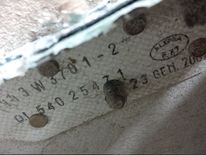New analysis of the final moments of doomed Malaysia Airlines Flight MH370 has suggested the aircraft plunged at an increasing speed with no human intervention.
The report by the Australian Transport Safety Bureau, which is spearheading the search into the missing plane, found the aircraft also appeared to be out of control when it disappeared.
A pilot would typically extend the flaps during a controlled ditching. Analysis of wing flap debris showed the aircraft was not configured for a landing.
Peter Foley, who is leading search operations, said: "You can draw your own conclusions as to whether that means someone was in control."
He added: "You can never be 100%. We are very reluctant to express absolute certainty."
Flight MH370 disappeared in March 2014 en route to Beijing from Kuala Lumpur with 239 passengers and crew on board in one of the world's greatest aviation mysteries.
In recent months, some have been pushing the theory that someone was still controlling the plane at the end of its flight. If that was the case, the aircraft could have glided much farther.
The question is crucial because if the aircraft glided the debris field could be outside the 120,000 sq km (46,330 sq mile) search zone which has almost been exhausted.
Some believe gliding might explain why the plane has not been found.
But satellite communications from the aircraft were consistent with it being in a "high and increasing rate of descent", colloquially known as a "death dive", the report said.
The analysis appeared to confirm the authorities' preferred theory - that the plane had no "inputs" during its final descent, meaning there was no pilot or no conscious pilot.
They believe the aircraft was on autopilot and spiralled when it ran out of fuel.
The report comes as a team of international and Australian experts begin a three-day summit in Canberra to re-examine all the data associated with the hunt for the plane and develop potential plans for continuing the search.
It contains new end-of-flight and drift simulation to try and define the search area.
More than 20 items of debris suspected or confirmed to be from the plane have washed ashore on coastlines throughout the Indian Ocean.
But a deep sea sonar search for the main underwater wreckage has found nothing.
In a separate development, a lawyer for the families of four Australian victims told the Reuters news agency that Malaysia Airlines had agreed to release information about the missing plane as part of a compensation case.
The information is to include the most recent medical certificates held by the flight crew.




No comments:
Post a Comment